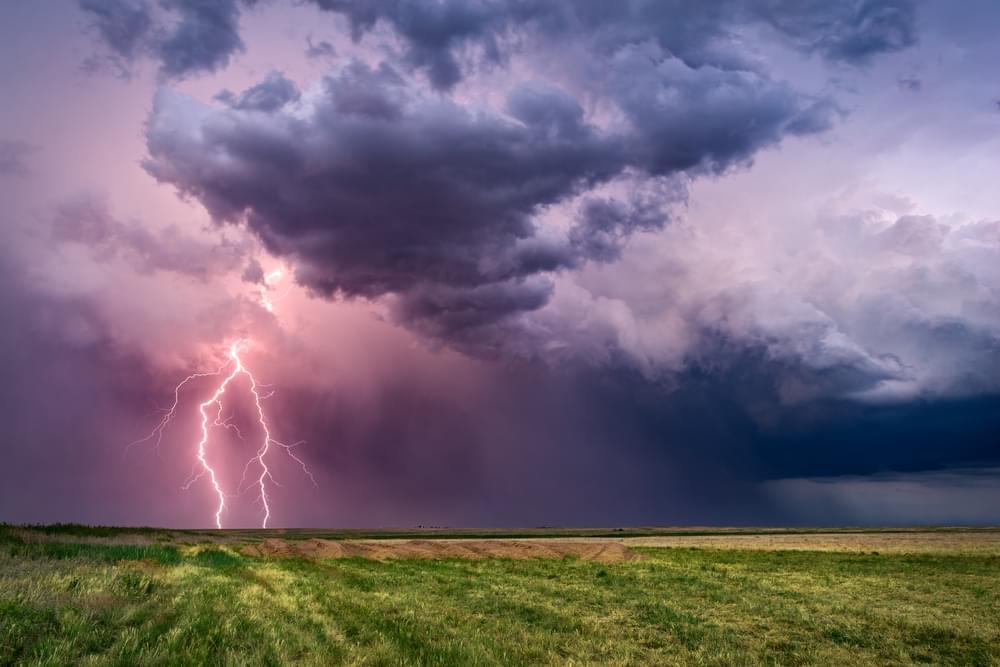Each year in the United States, more than 400 people are struck by lightning. On average, around 41 people are killed; hundreds of others suffer permanent neurological disabilities. Most of these tragedies can be avoided with a few simple precautions. When thunderstorms threaten, get to a safe place. Lightning safety is an inconvenience that can save your life.
The National Oceanic and Atmospheric Administration (NOAA) collects information on weather-related deaths to learn how to prevent these tragedies. Many lightning victims say they were “caught” outside in the storm and couldn’t get to a safe place. With proper planning, these tragedies could have been prevented. Other victims waited too long before seeking shelter. By heading to a safe place 5 to 10 minutes sooner, they could have avoided being struck by lightning. Some people were struck because they went back outside too soon. Stay inside a safe building or vehicle for at least 30 minutes after you hear the last thunder clap. Finally, some victims were struck inside homes or buildings while they were using electrical equipment or corded phones. Others were in contact with plumbing, a metal door or a window frame. Avoid contact with these electrical conductors when a thunderstorm is nearby.
All thunderstorms produce lightning and are dangerous. Lightning often strikes outside the area of heavy rain and may strike as far as 10 miles from any rainfall. Many lightning deaths occur ahead of storms or after storms have seemingly passed. Keep this simple fact in mind: if you can hear thunder, you are in danger. Also, don’t be fooled by blue skies. There is no such thing as “heat lightning.” All lightning comes as a result of a thunderstorm, and if you hear thunder, lightning is close enough to pose an immediate threat to you.
The following lightning safety tips could one day save your life:
- NO PLACE outside is safe when thunderstorms are in the area!
- If you hear thunder, lightning is close enough to strike you.
- When you hear thunder, immediately move to safe shelter. A safe shelter is an enclosed substantial building with electricity or plumbing, such as a home, office building, school, restaurant, or a store. Sheds, tents, picnic pavilions, porches, and ball-field dugouts DO NOT offer any lightning protection whatsoever and may actually increase your danger of being struck.
- If no substantial building is available for shelter, enclosed metal-topped vehicles offer protection from lightning, but make sure the windows are in the up position.
- Stay in your safe shelter at least 30 minutes after you hear the last sound of thunder.
- When indoors, stay off corded phones, computers and other electrical equipment that put you in direct contact with electricity. Avoid plumbing, including sinks, baths and faucets. Stay away from windows and doors, and stay off porches. Do not lie on concrete floors, and do not lean against concrete walls.
- If you are caught outside with no safe shelter anywhere nearby, the following actions may reduce your risk:
- Immediately get off elevated areas such as hills, mountain ridges or peaks
- Never lie flat on the ground o Never shelter under an isolated tree
- Never use a cliff or rocky overhang for shelter
- Immediately get out and away from ponds, lakes and other bodies of water
- Stay away from objects that conduct electricity (barbed wire fences, power lines, windmills, etc.)
The most effective lightning safety action can be found in avoiding the lightning threat altogether. Have a lightning safety plan. If you have outdoor plans, know where you’ll go for safety and how much time it will take to get there. Make sure your plan allows enough time to reach safety. Before going outdoors, check the forecast for thunderstorms. If thunderstorms are in the forecast, consider postponing activities to avoid being caught in a dangerous situation. Finally, when outdoors, monitor the weather and be sure to look for signs of a developing thunderstorm such as darkening skies, flashes of lightning, or increasing wind. If you hear thunder, even a distant rumble, immediately activate your lightning safety plan and move to a safe place.
For more information about safety, please visit https://www.weather.gov/safety/lightning.
Be sure to take some time this week to learn more about severe weather safety. Learning and practicing severe weather safety when the weather is good will allow you to react more quickly when the weather turns bad. You can learn more about severe weather safety by visiting the North Carolina Department of Public Safety preparedness website at readync.org. This web page features an abundance of information that will help you plan and prepare for the severe weather season.


